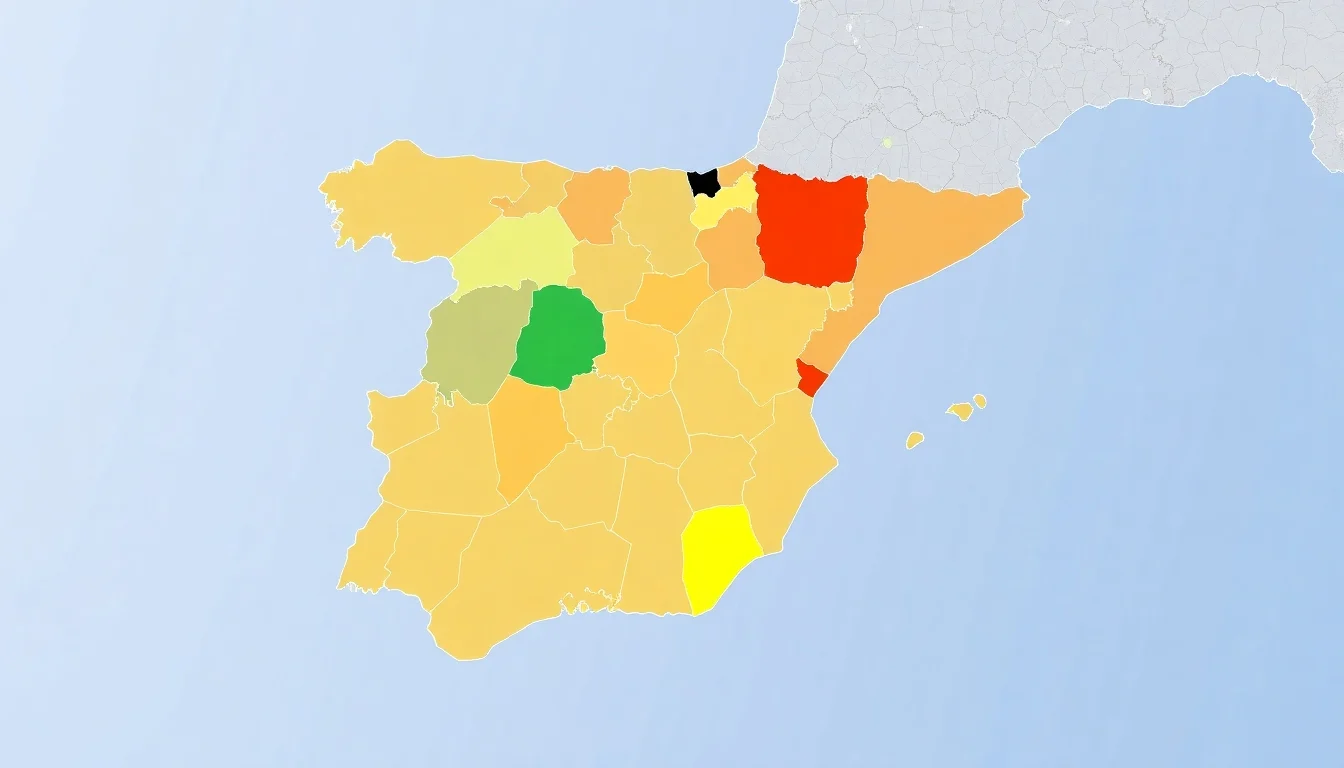Turnkey relocation to Spain from 6 weeks
We will help you to obtain a Spanish residence permit for the whole family with a minimum tax burden!
Read more
Get a free consultation
From 0 €
Tax burden per month
From 6 weeks
Term for obtaining a residence permit
5 years
Until permanent residence permit


Population of Spain in 2025: Demographics, Composition, and Trends

Spain is one of the most dynamic countries in Europe, known for its rich cultural heritage, unique climate, and high-quality infrastructure. In 2025, the country remains attractive to people from around the world, and its population continues to grow. But how does this affect Spanish society and the economy? In this article, we explore the current demographic situation in Spain, key statistics, and the impact of immigration and population aging on the country’s future.
 As of 2025, Spain’s population is approximately 47.6 million people. Despite declining birth rates, the number of residents continues to rise thanks to immigration. The country has a high average life expectancy — around 83 years — attributed to quality healthcare and living conditions. However, Spain is facing a serious challenge: an aging population. Long-term forecasts indicate that by 2030, over 20% of the population will be over 65 years old.
As of 2025, Spain’s population is approximately 47.6 million people. Despite declining birth rates, the number of residents continues to rise thanks to immigration. The country has a high average life expectancy — around 83 years — attributed to quality healthcare and living conditions. However, Spain is facing a serious challenge: an aging population. Long-term forecasts indicate that by 2030, over 20% of the population will be over 65 years old.
 Immigration is a key factor in Spain’s population growth. In 2025, about 14% of the country’s residents are foreigners. Most migrants come from Latin America, Morocco, and Eastern Europe. These individuals not only fill labor-intensive job vacancies but also contribute to increasing the birth rate. Migrants typically have higher fertility rates, which helps offset the low birth rates among native Spaniards.
Immigration is a key factor in Spain’s population growth. In 2025, about 14% of the country’s residents are foreigners. Most migrants come from Latin America, Morocco, and Eastern Europe. These individuals not only fill labor-intensive job vacancies but also contribute to increasing the birth rate. Migrants typically have higher fertility rates, which helps offset the low birth rates among native Spaniards.
 The growing population in Spain significantly influences both the economy and society. On one hand, a larger population supports economic growth by expanding the labor market and boosting consumer demand. On the other hand, a rising proportion of elderly residents requires substantial investments in the pension system and healthcare services. Immigration helps counterbalance aging trends and adds cultural and professional diversity to the workforce. In 2025, Spain continues to grapple with major demographic challenges, such as a growing elderly population and low birth rates, but immigration plays a vital role in maintaining population levels and ensuring economic stability. For the country’s successful future, it is essential to effectively address migrant integration and ensure the sustainable development of its social system.
The growing population in Spain significantly influences both the economy and society. On one hand, a larger population supports economic growth by expanding the labor market and boosting consumer demand. On the other hand, a rising proportion of elderly residents requires substantial investments in the pension system and healthcare services. Immigration helps counterbalance aging trends and adds cultural and professional diversity to the workforce. In 2025, Spain continues to grapple with major demographic challenges, such as a growing elderly population and low birth rates, but immigration plays a vital role in maintaining population levels and ensuring economic stability. For the country’s successful future, it is essential to effectively address migrant integration and ensure the sustainable development of its social system.
Go back to the blog
Key Figures
 As of 2025, Spain’s population is approximately 47.6 million people. Despite declining birth rates, the number of residents continues to rise thanks to immigration. The country has a high average life expectancy — around 83 years — attributed to quality healthcare and living conditions. However, Spain is facing a serious challenge: an aging population. Long-term forecasts indicate that by 2030, over 20% of the population will be over 65 years old.
As of 2025, Spain’s population is approximately 47.6 million people. Despite declining birth rates, the number of residents continues to rise thanks to immigration. The country has a high average life expectancy — around 83 years — attributed to quality healthcare and living conditions. However, Spain is facing a serious challenge: an aging population. Long-term forecasts indicate that by 2030, over 20% of the population will be over 65 years old.
The Role of Immigration in Population Growth
 Immigration is a key factor in Spain’s population growth. In 2025, about 14% of the country’s residents are foreigners. Most migrants come from Latin America, Morocco, and Eastern Europe. These individuals not only fill labor-intensive job vacancies but also contribute to increasing the birth rate. Migrants typically have higher fertility rates, which helps offset the low birth rates among native Spaniards.
Immigration is a key factor in Spain’s population growth. In 2025, about 14% of the country’s residents are foreigners. Most migrants come from Latin America, Morocco, and Eastern Europe. These individuals not only fill labor-intensive job vacancies but also contribute to increasing the birth rate. Migrants typically have higher fertility rates, which helps offset the low birth rates among native Spaniards.
Demographic Features of Spain
Spain exhibits several unique demographic characteristics. Firstly, the country has a low fertility rate, with fewer than 1.3 children per woman. Secondly, there is extensive urbanization — over 80% of Spaniards live in major cities such as Madrid, Barcelona, and Valencia. Thirdly, the nation continues to face a high proportion of elderly citizens, creating a growing need for improved healthcare and social services.The Impact of Population Growth on the Economy and Society
 The growing population in Spain significantly influences both the economy and society. On one hand, a larger population supports economic growth by expanding the labor market and boosting consumer demand. On the other hand, a rising proportion of elderly residents requires substantial investments in the pension system and healthcare services. Immigration helps counterbalance aging trends and adds cultural and professional diversity to the workforce. In 2025, Spain continues to grapple with major demographic challenges, such as a growing elderly population and low birth rates, but immigration plays a vital role in maintaining population levels and ensuring economic stability. For the country’s successful future, it is essential to effectively address migrant integration and ensure the sustainable development of its social system.
The growing population in Spain significantly influences both the economy and society. On one hand, a larger population supports economic growth by expanding the labor market and boosting consumer demand. On the other hand, a rising proportion of elderly residents requires substantial investments in the pension system and healthcare services. Immigration helps counterbalance aging trends and adds cultural and professional diversity to the workforce. In 2025, Spain continues to grapple with major demographic challenges, such as a growing elderly population and low birth rates, but immigration plays a vital role in maintaining population levels and ensuring economic stability. For the country’s successful future, it is essential to effectively address migrant integration and ensure the sustainable development of its social system.


 06/05/2025
06/05/2025  Reading time: 2 min
Reading time: 2 min 





